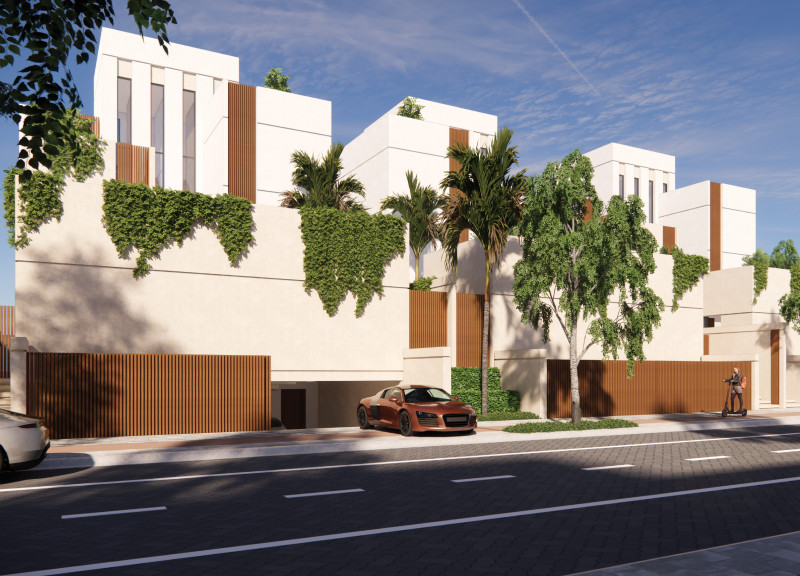5 key facts about this project
The architectural design emphasizes a strong connection between indoor and outdoor spaces, which is a central theme in modern architecture. Large windows dominate the facade, allowing natural light to permeate the interiors, which enhances the overall sense of openness. This relationship with the environment not only creates a visually engaging aesthetic but also supports energy-efficient practices by maximizing daylight use while minimizing reliance on artificial lighting.
Materiality plays a significant role in the project, as carefully selected materials contribute to both the visual and tactile qualities of the architecture. A combination of sustainably sourced timber, polished concrete, and large expanses of glass forms the primary material palette. The warmth of the wood provides a stark contrast to the coolness of the concrete, creating a balanced sensory experience that invites occupants to engage more deeply with the space. Additionally, the glass elements foster transparency, dissolving boundaries between indoors and outdoors, and providing breathtaking views that enrich the user experience.
The design outcomes of this project are particularly noteworthy, as they reflect contemporary architectural ideas that prioritize sustainability and user-centric spaces. Incorporating green roofs and vertical gardens, the building not only offers ecological benefits, such as improved air quality and biodiversity, but also enhances its aesthetic value. The greenery integrates seamlessly with the overall architectural language, promoting a sense of tranquility and well-being, which can often be a rarity in urban settings.
Unique design approaches are evident in both the layout and execution of this project. The floor plan is designed with flexibility in mind, accommodating various uses while promoting movement and flow throughout the space. This adaptability allows the structure to evolve over time, catering to the changing needs of its occupants. Furthermore, the interplay of different heights and volumes introduces an engaging dynamic, making the experience of navigating the space multifaceted and captivating.
Attention to detail is apparent at every level of this architectural endeavor. Custom features, such as built-in seating areas and integrated storage solutions, establish a functional dialogue with the architecture, eliminating clutter and maximizing usability. The approach taken by the architects is grounded in a deep understanding of how individuals and communities interact with their environments, ensuring that the project is not only visually appealing but also deeply functional.
This project stands as a testament to the evolving nature of architecture, marrying traditional principles with contemporary sensibilities. It breaks away from convention by embracing a holistic understanding of the surrounding environment and its users. The thoughtful design strategies employed illustrate a commitment to sustainability and community engagement, prioritizing the user experience while respecting the ecological footprint.
As you delve deeper into this architectural project, consider exploring elements such as architectural plans, architectural sections, and detailed architectural designs to gain enhanced insights into how these design ideas translate into built form. The intricacies of the project invite further exploration and appreciation of its innovative contributions to the architectural discourse.


























